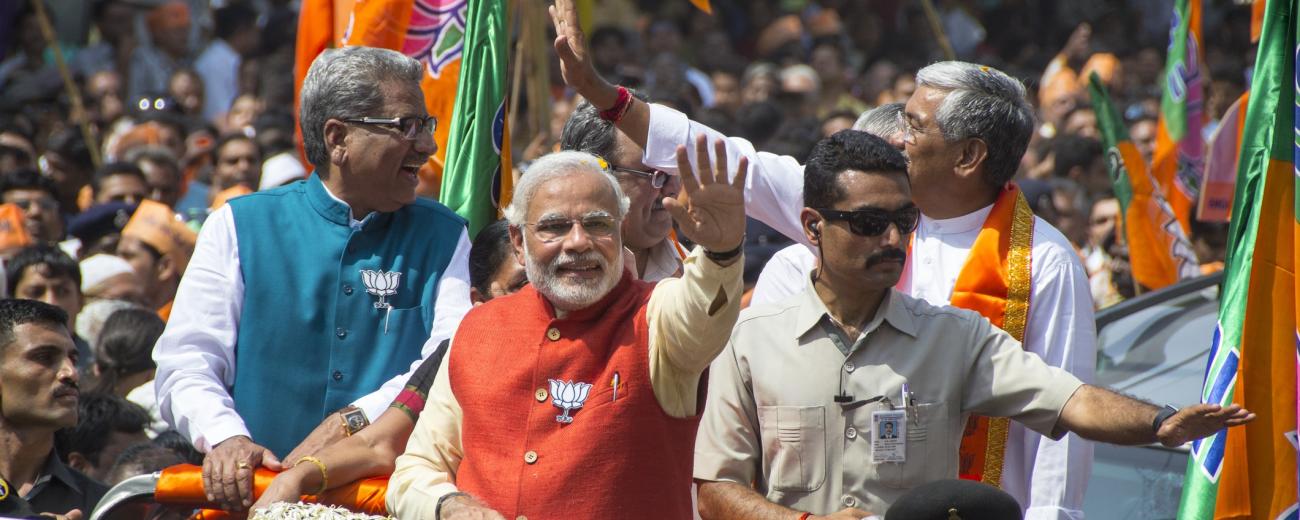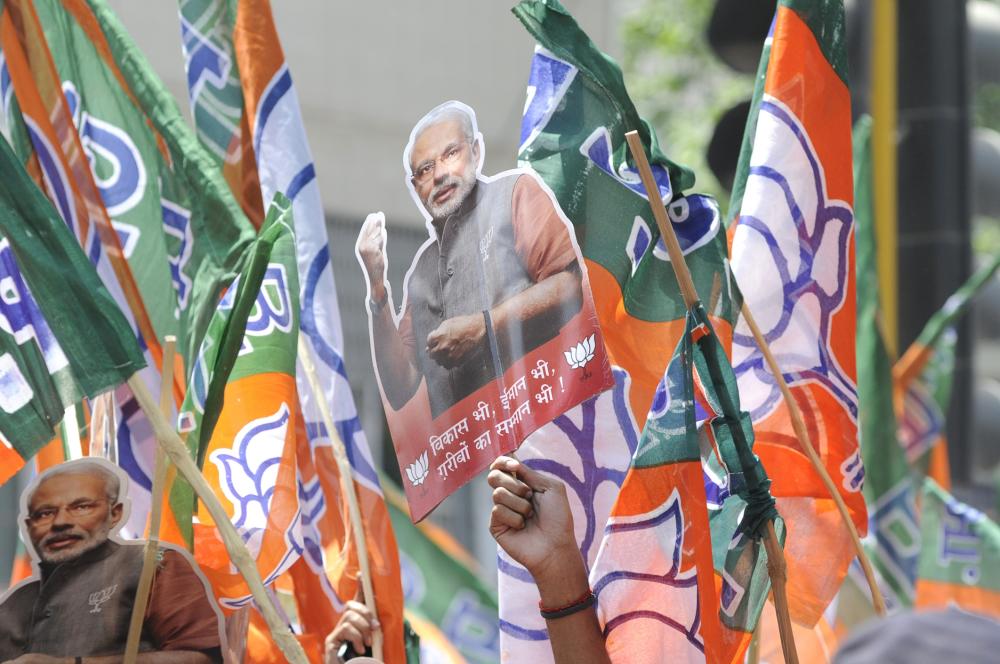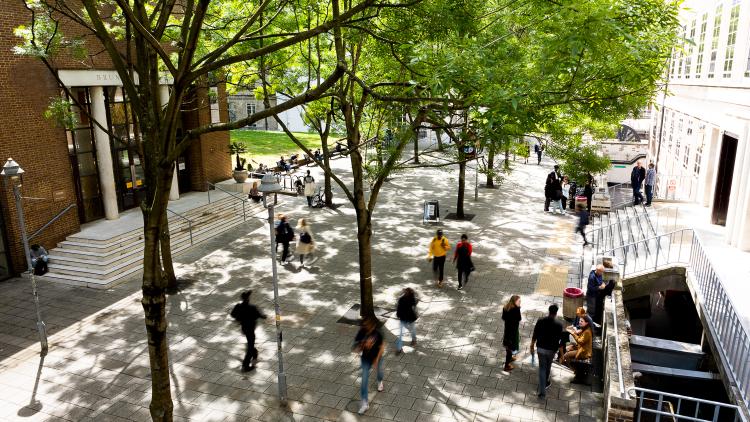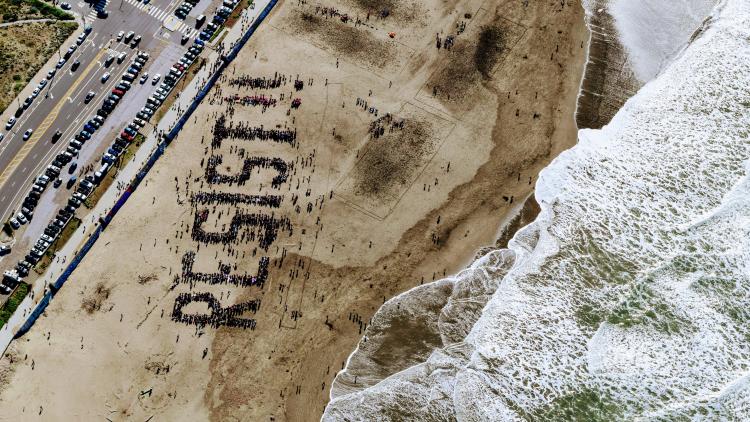The Indian election: Is it still the world's largest democracy?


A SOAS student writes about the 2024 Indian election and its implications for democracy. The blog is based on an interview with Dr Simona Vittorini and the undergraduate politics course, 'Democracy and Authoritarianism in India'.
India, with 1.4 billion people and 970 million eligible voters, holds the world’s largest election. Prime Minister Narendra Modi aims for a consecutive third five-year tenure in office. However, with a growing authoritarian trend, it is up for debate whether India maintains its status as the 'world’s largest democracy'.
Who is Modi?
On the off chance that you have missed the massive posters of his face, from billboards to COVID-19 vaccination certificates, Narendra Modi is the leader of the Bhartiya Janata Party (BJP), which has been in power since 2014. The BJP is a far-right nationalist party running on a platform of Hindutva–the belief that India should move away from being a secular nation and promote the hegemony of Hinduism.
With a growing authoritarian trend, it is up for debate whether India maintains its status as the ‘world’s largest democracy.’
The BJP is strongly linked with Rashtriya Swayamsevak Sangh (RSS), the world’s largest right-wing volunteer paramilitary organisation, modelled after Mussolini's Blackshirts. It has historic roots, having supported the British Raj, and continues to spread its message of Hindu supremacy. Modi won a landslide victory in 2014, and again in 2019, and 2024 is set to look no different.
What is the opposition?
Post-independence India was ruled by the Indian National Congress, a centrist party that played a big role in the freedom struggle but has been criticised for its dynastic rule. This year, it is running as part of the Indian National Developmental Inclusive Alliance (INDIA) - a fledgling coalition of about two dozen opposition parties.
In the election system, a group must be voted in, which then elects the prime minister, so INDIA is taking this route of not having a singular leader pre-election. This stands in stark contrast to the BJP running with Modi as the central figurehead, where many complain that politics being reduced to one figure is a degradation of democratic rule.
Hindutva politics
The primary vote share comes based on Hindu nationalist politics that further marginalise minorities, particularly Muslims. The RSS has flourished under BJP rule - the same organisation that assassinated Gandhi. BJP successfully delivered on its nationalist promises, starting with the annexation of Jammu and Kasmir. This region has been highly contested since partition, and India and Pakistan both claimed the Muslim-majority region.
In 2019, Article 370, which gave Kashmir its special status as a relatively autonomous region, was pulled by India, although according to the constitution, they needed the consent of Kashmiris to modify its status. In anticipation of potential protests following the decision, the authorities enforced a curfew, restricted internet access, bolstered security measures, and subjected hundreds of Muslims and other opposition figures to months-long house arrest.
Another notable incident has been Modi's inauguration of the Ram Temple, built on the ruins of a mosque torn down by a nationalist mob in 1992. What was then seen as an extremist mob is now normalised as a victory for Hindus, a climactic point in the shift towards ‘Ram Rajya’ - India ruled by a Hindu God, where the state has become inextricably linked with religion. Both these pivotal situations were approved of by the Supreme Court of India.
The Supreme Court has been complicit in the proliferation of the Modi regime by purposely delaying judgements to suit the BJP timeline, and any judges not participating in the nationalist agenda are arbitrarily reappointed. The main concern with court complicity is it legitimises what would otherwise be apparent as a political agenda.
A decisive policy pushed amongst country-wide protests has been the Citizenship Amendment Act (CAA) of 2019. The act claims to fast-track citizenship for immigrants but excludes certain religions like Muslims and has been called a violation of human rights by Amnesty International. Finally implemented earlier this year, it should be noted that the timing of the policy disenfranchises certain workers while creating a loyal voter base amongst Hindus.
Similar strands of voter repression can be observed in Jammu and Kashmir, where most citizens who have accessed voter registration are Hindus. The link between the rapid growth of Hindutva politics and voter suppression is evident.
Civic Repression
The space for dissent has been shrinking. The Unlawful Activities Prevention Act (UAPA) is a draconian law for counter-terrorism, which has been used to unlawfully detain anyone who dares to challenge the Modi regime. Journalists, poets, NGO workers, activists, union heads and even just ordinary citizens have been targeted using a law that should be reserved for ‘extraordinary’ circumstances. In approximately 97% of the UAPA cases, the defendants were acquitted. Often, trials didn't commence until several years after the arrests. The UAPA allows for arrests without evidence, contradicting democratic principles.
International rankings have downgraded India’s status as a full democracy. In a masterstroke of controlling the narrative, Modi has decided to create India’s own democracy index.
After 2014, a steady rise in repression can be observed, fueled by a new digital infrastructure. The farmer's protest in India in 2020 drew international attention, but the ongoing farmer's protest has been met with much heavier force. Beyond the tear gas shells and metal pellets used to attack peaceful protestors, Human Rights Watch has raised concerns about the use of drones to surveil protestors. The government has threatened to use drone cameras to identify and take away the passports of protestors. Internet shutdowns have also been used whenever there is tension across the country to seize communication and organisation. The longest shutdown was in Kashmir for 522 days.
What does this mean for Indian democracy?
It would be unfair to pretend that Modi was the first to start privatising public interest, and helped power concentrate amongst the rich when really India began to liberalise in the 1990s. But what has happened under Modi is a system of complete control – from the ‘Godi media’ that parrots Hindu nationalism to electoral bonds which have amassed the BJP a fortune while the opposition struggles for financing. History did not begin in 2014, but the story of Indian democracy has reached a climactic point.
International rankings have downgraded India’s status as a full democracy. In a masterstroke of controlling the narrative, Modi has decided to create India’s own democracy index.
This blog was written by a SOAS student who chose to remain anonymous. The views and opinions expressed in SOAS Blogs are solely those of the respective authors and do not necessarily reflect the views of the organisation or act as an endorsement.
Header image credit: Modi © Nisarg Lakhmani via Dreamstime.



